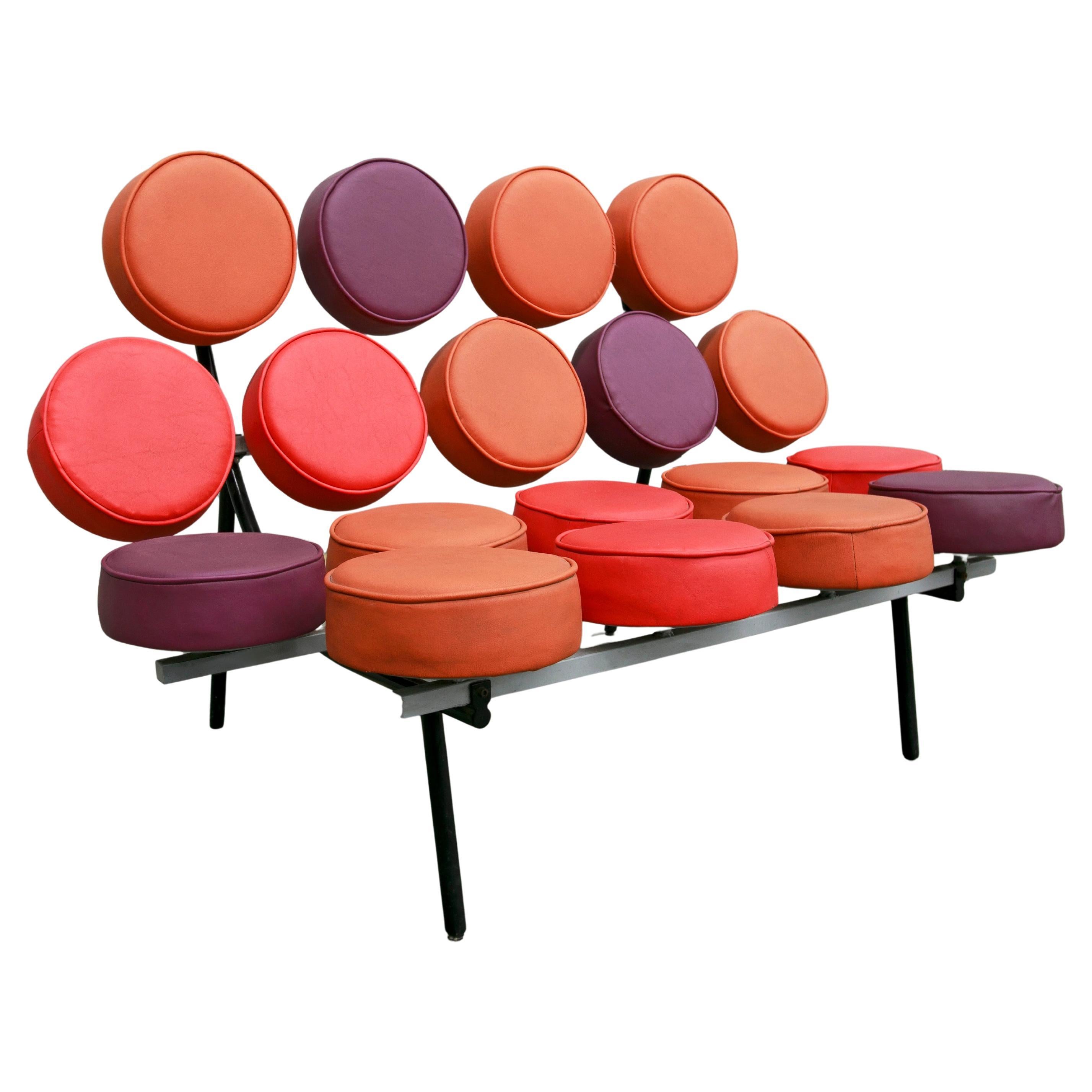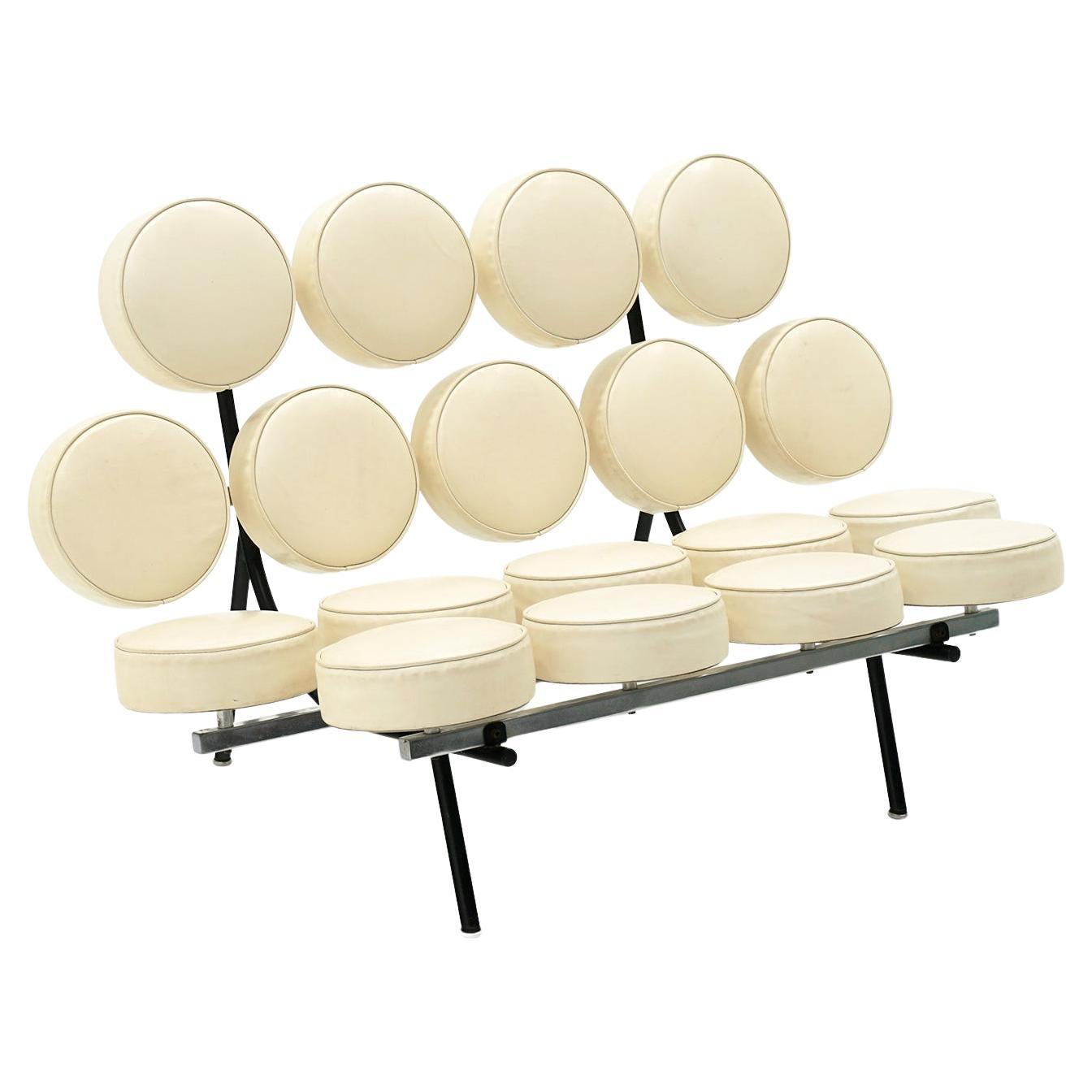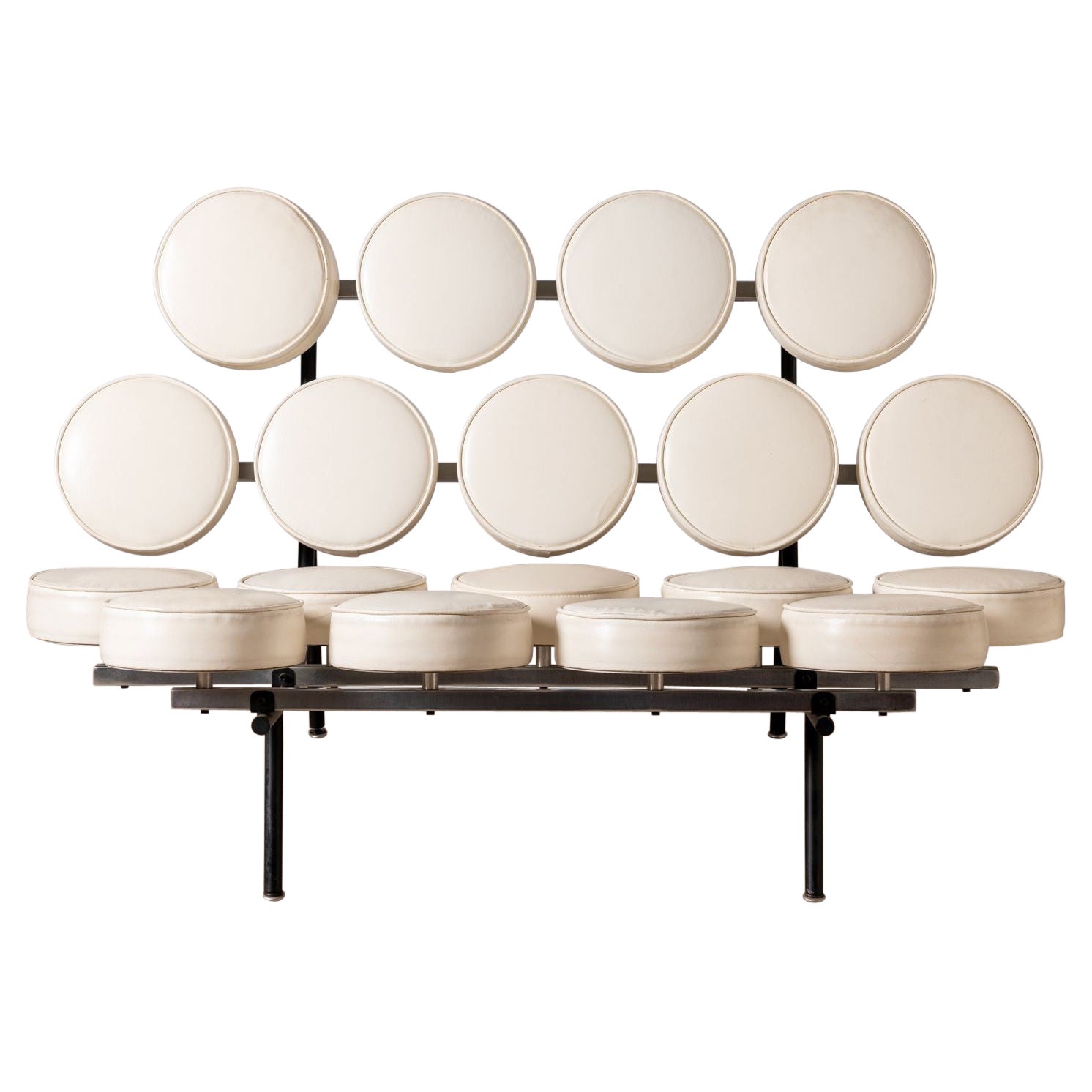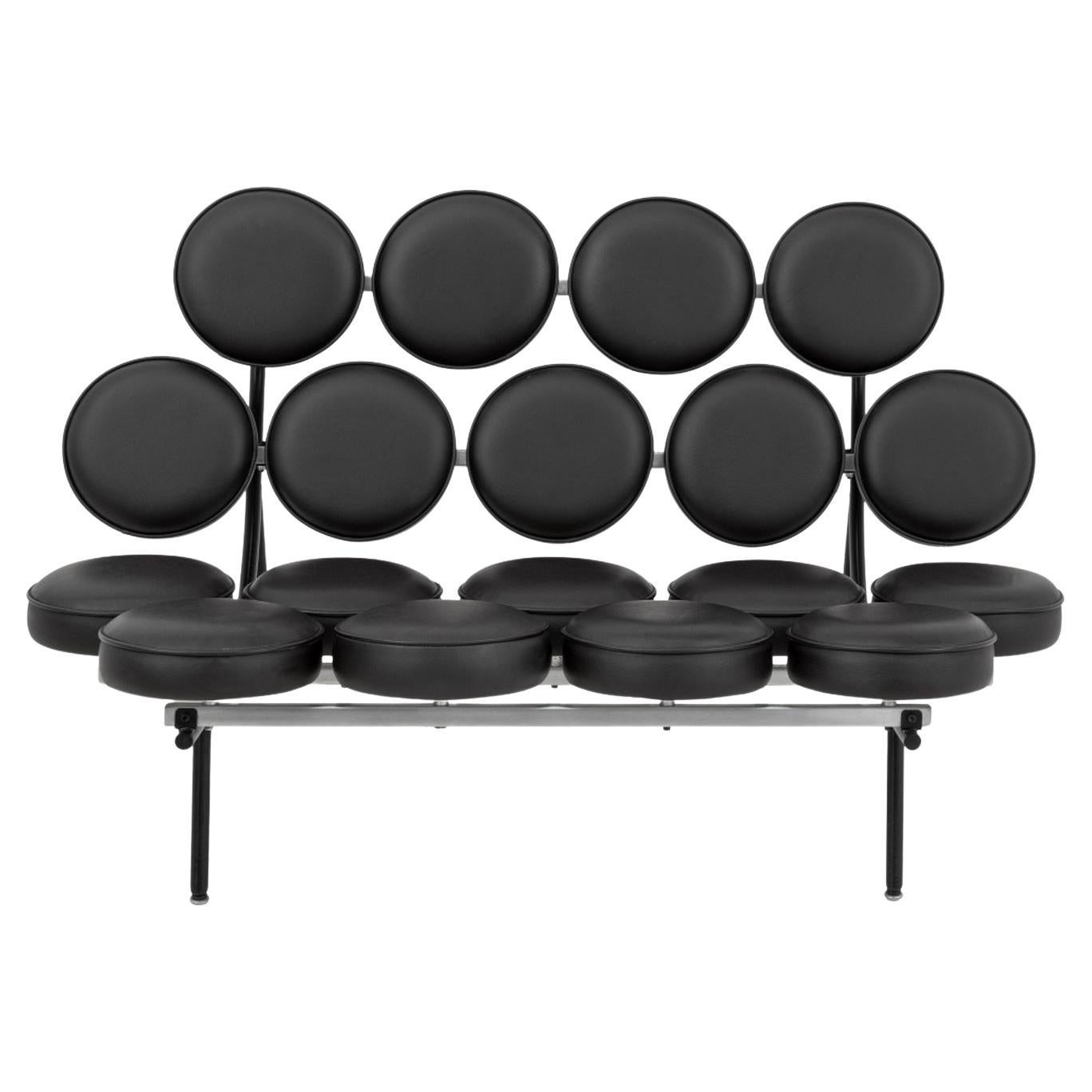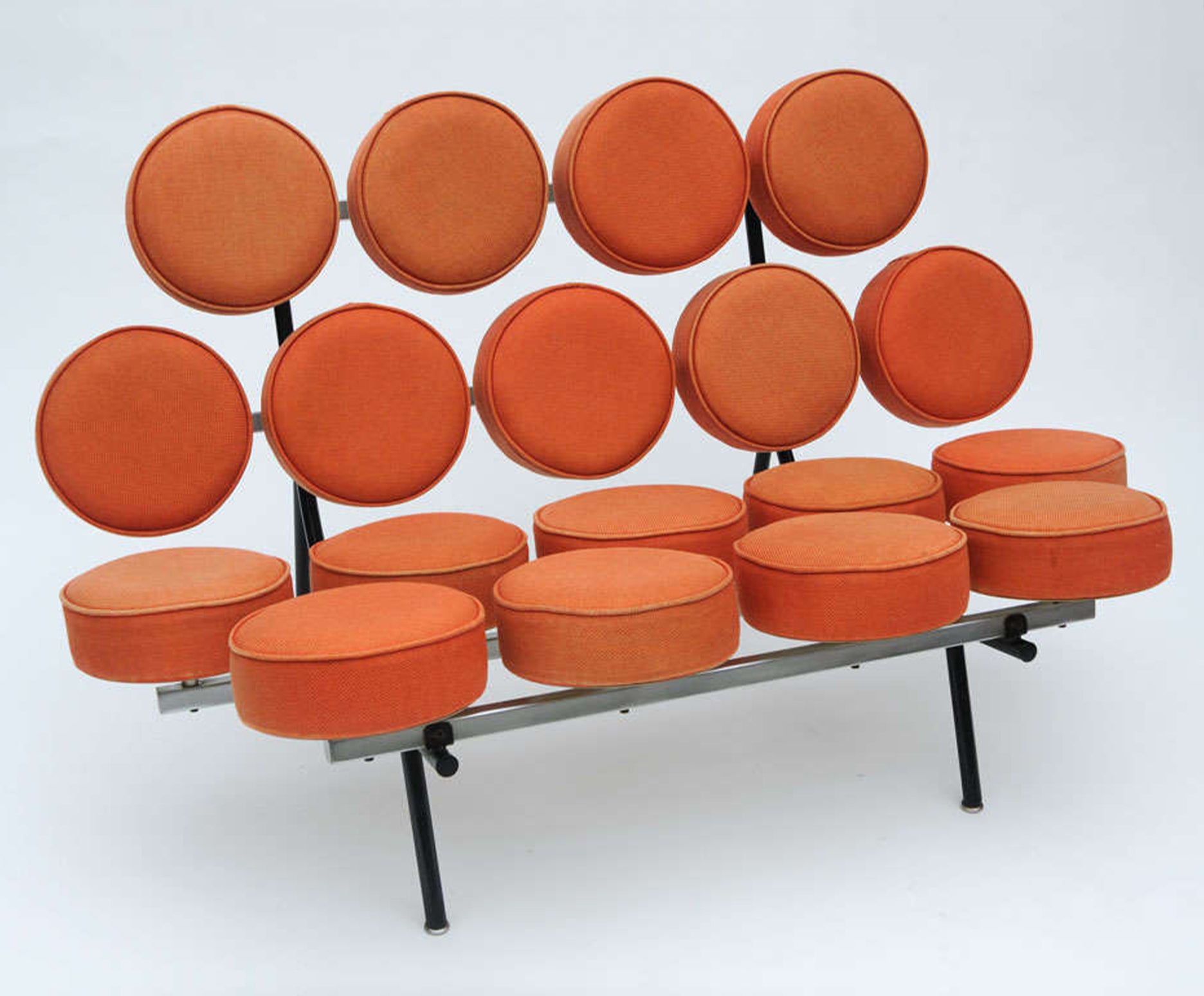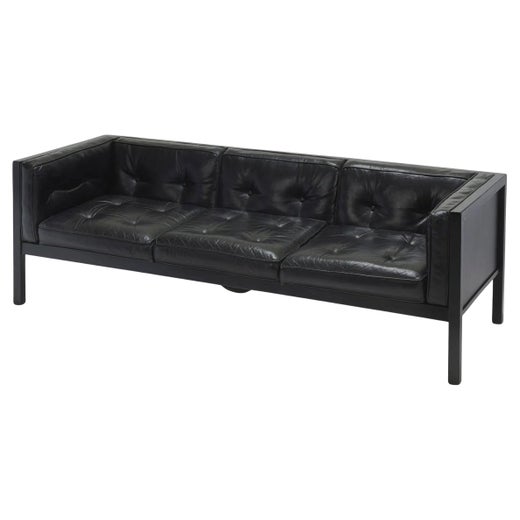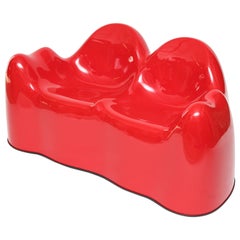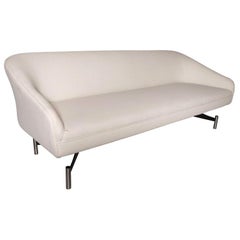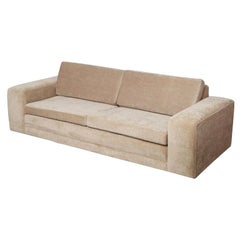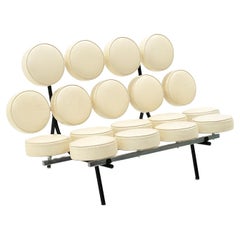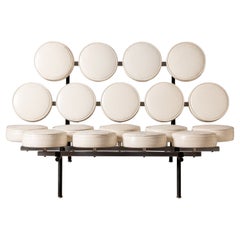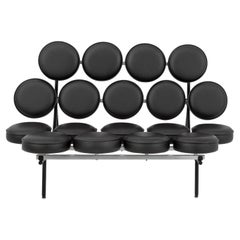George Nelson Marshmallow Sofa
About the Item
- Creator:George Nelson (Designer)
- Design:
- Dimensions:Height: 31 in (78.74 cm)Width: 51.25 in (130.18 cm)Depth: 31 in (78.74 cm)
- Materials and Techniques:
- Place of Origin:
- Period:
- Date of Manufacture:1956
- Condition:Wear consistent with age and use. Original upholstery(re-foamed),original enameled frame some fading to the original upholstery.
- Seller Location:West Palm Beach, FL
- Reference Number:1stDibs: 1208318432618
Marshmallow Sofa
Original models of the Marshmallow sofa have fetched tens of thousands of dollars at auction courtesy of the famously limited inaugural production. A fusion of function and Pop Art created by former George Nelson employee and young designer Irving Harper (1916–2015), the sofa was conceived after a salesman from a Long Island, New York–based plastics manufacturer visited George Nelson Associates in Manhattan with his company’s new injection-molded vinyl pads. The pads were durable and cost-effective, argued the salesman, because they were “self-skinning” and wouldn’t need upholstering. To Harper, the cushions presented a design challenge — one he gamely accepted. He worked up a model over a weekend’s time.
The Marshmallow sofa’s scattered disks, which measured 10 inches in diameter, looked as if they were suspended in midair. When the sofa debuted in 1956, the Herman Miller catalogue listed the design as the “Marshmallow Love Seat #5670” and credited it to Nelson rather than Harper, stating, “Despite its astonishing appearance, this piece is very comfortable.”
Unfortunately, with 18 cushions per brushed tubular steel frame, the venture was far more expensive than Nelson and Harper realized, and Herman Miller manufactured only a couple hundred models in the initial batch. The company stopped producing the sofa in 1961 but reissued the piece in the 1980s. Now it’s available in leather and a variety of brightly colored fabrics. Harper, who redesigned the Herman Miller logo in 1946, conceived of other Pop Art–style furnishings while working for George Nelson, such as the Ball clock and Sunburst clock.
George Nelson
Architect, designer, and writer George Nelson was a central figure in the mid-century American modernist design movement; and his thoughts influenced not only the furniture we live with, but also how we live.
Nelson came to design via journalism and literature. Upon receiving his bachelor’s degree in architecture from Yale in 1931, he won the Prix de Rome fellowship, and spent his time in Europe writing magazine articles that helped bring stateside recognition to Ludwig Mies van der Rohe, Gio Ponti, Le Corbusier and other canonical modernist architects.
In the 1940s, Nelson wrote texts that suggested such now-commonplace ideas as open-plan houses, storage walls and family rooms. D.J. De Pree, the owner of the furniture maker Herman Miller, was so impressed by Nelson that in 1944 — following the sudden death of Gilbert Rohde, who had introduced the firm to modern design in the 1930s — he invited Nelson to join the company as its design director. There Nelson’s curatorial design talents came to the fore.
To Herman Miller he brought such eminent creators as Charles and Ray Eames, Isamu Noguchi, and the textile and furniture designer Alexander Girard. Thanks to a clever contract, at the same time as he directed Herman Miller he formed a New York design company, George Nelson & Associates, that sold furniture designs to the Michigan firm. Nelson's studio also sold designs for clocks to the Howard Miller Clock Company, a manufacturer that was initially part of Herman Miller before it became an offshoot that was helmed by Howard Miller, D.J. De Pree's brother-in-law.
Nelson’s New York team of designers (who were rarely individually credited) would create such iconic pieces as the Marshmallow sofa, the Coconut chair, the Ball clock, the Bubble lamp series and the many cabinets and beds that comprise the sleek Thin-Edge line.
For dedicated collectors, as well as for interior designers who look beyond “the look,” there is a “cool factor” inherent to vintage pieces from George Nelson and others. Nelson was in on it from the start, and it’s valuable to have a piece that was there with him.
But still, as is evident from the offerings from dealers on 1stDibs, in any of the designs, in any iteration whose manufacture Nelson oversaw and encouraged, there are shining elements of lightness, elegance, sophistication — and a little bit of swagger. George Nelson felt confident in his ideas about design and didn’t mind letting the world know.
- ShippingRetrieving quote...Shipping from: West Palm Beach, FL
- Return Policy
More From This Seller
View AllVintage 1960s American Settees
Fiberglass, Rubber
20th Century American Sofas
Upholstery
Vintage 1960s North American Chairs
Leather
20th Century American Sofas
Upholstery
Vintage 1960s American Lounge Chairs
Aluminum
Vintage 1960s American Lounge Chairs
Walnut, Leather
You May Also Like
Mid-20th Century Brazilian Mid-Century Modern Sofas
Metal
Vintage 1950s American Mid-Century Modern Settees
Aluminum, Steel
Mid-20th Century American Sofas
Steel
2010s American Mid-Century Modern Sofas
Enamel, Steel
21st Century and Contemporary American Mid-Century Modern Sofas
Aluminum, Steel, Chrome
Mid-20th Century American Mid-Century Modern Sofas
Metal
Read More
A Guide to Herman Miller’s Most Iconic Furniture
The prolific manufacturer has partnered with many of the world’s top designers since opening its doors in 1923. Here are some of the company’s greatest hits, which helped transform the American home and office.
Kule and Forsyth Give Iconic Furniture a Bold Makeover with Stripes
Maggie and Anne Genovese, of Forsyth, teamed up with fashion designer Nikki Kule to reimagine some classic pieces.
